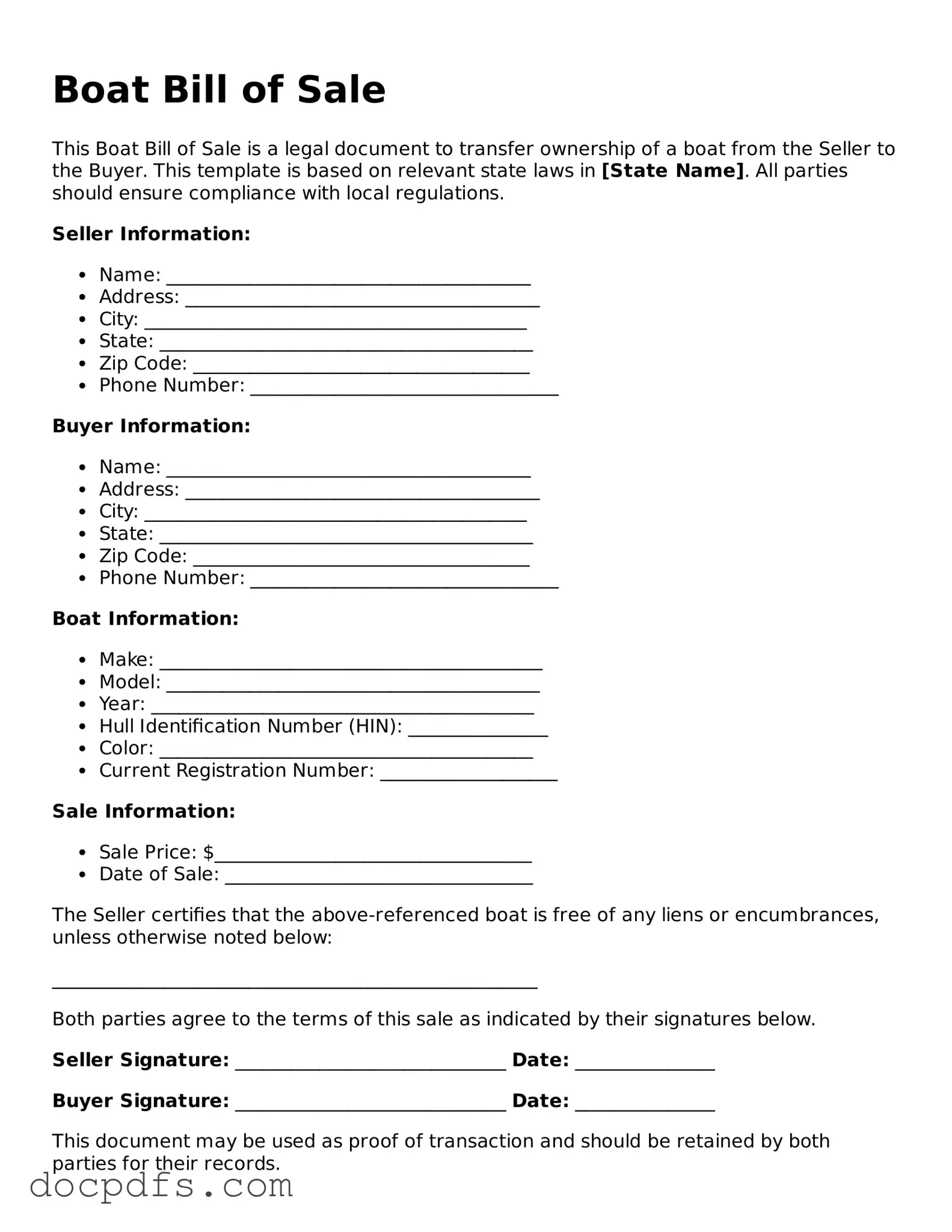Legal Boat Bill of Sale Document
A Boat Bill of Sale is a legal document that serves as proof of the transfer of ownership of a boat from one party to another. This form details essential information about the vessel, including its make, model, and identification number, along with the buyer and seller's details. Having this document is crucial for ensuring a smooth transaction and for future registration purposes.
Open Boat Bill of Sale Editor Now
